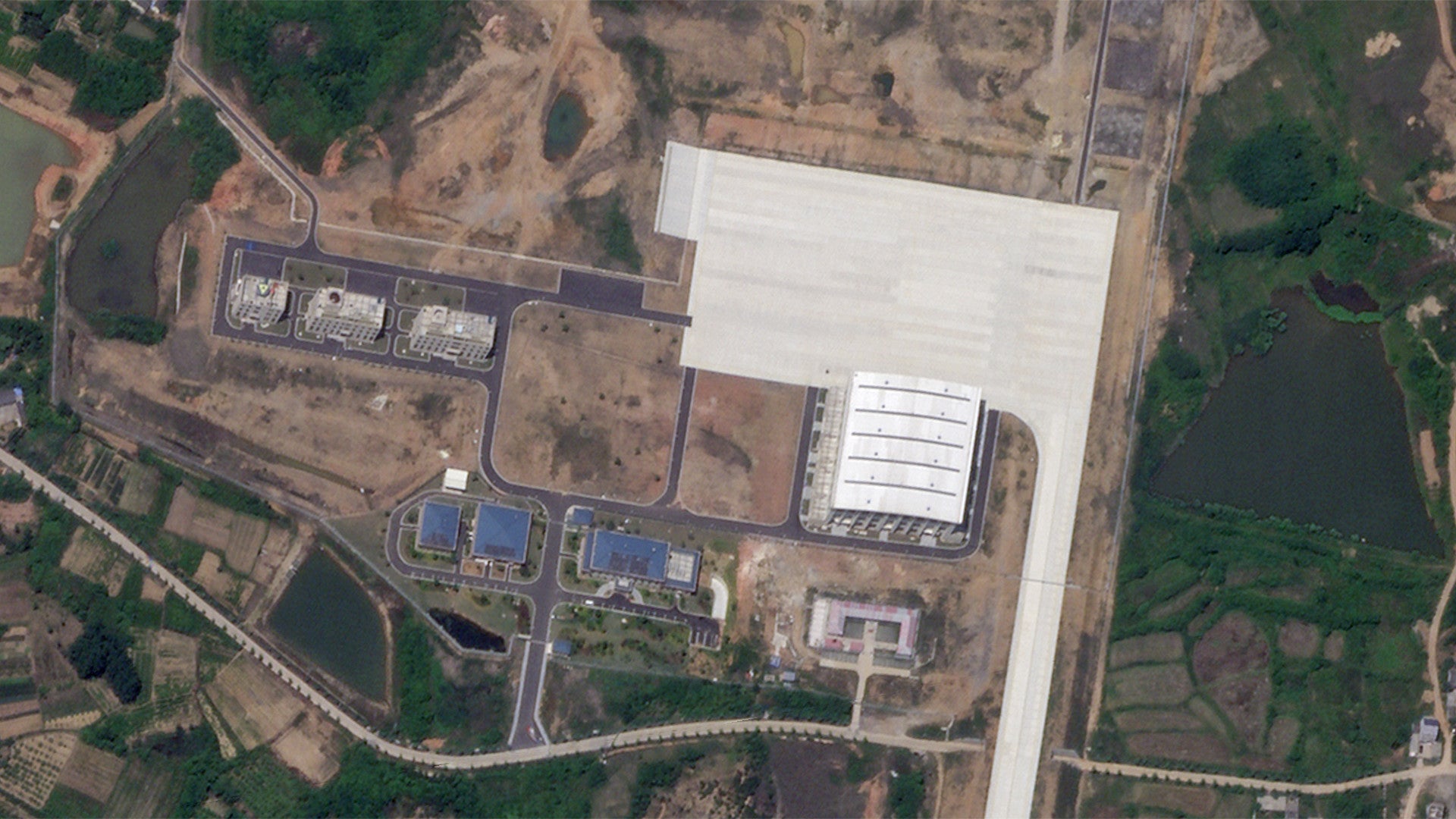Over the past few years, satellite imagery has shown a unique hangar and support facility emerging at a Chinese People’s Liberation Army Air Force bomber base in the eastern part of the country. This self-contained installation, which is detached from the main base and sits inside its own high-security perimeter, appeared ahead of reports that one of the units at this base, the 30th Air Regiment, appeared to be operating the WZ-8, a large high-speed and high-flying rocket-powered spy drone designed to be launched in mid-air from the H-6N missile carrier aircraft. The construction has also come amid persistent rumors about the imminent public debut of China’s H-20 stealth bomber.
Imagery that The War Zone obtained and otherwise reviewed from Planet Labs, as well as Google Earth, shows that work on this secluded addition to Luhe-Ma’an Air Base, which is situated less than 30 miles to the north of the city of Nanjing, the capital of China’s eastern Jiangsu province, began around 2017. The new hangar is around 265 feet long and 245 feet wide, as well as being quite tall, as is evident from the three rows of large windows visible on the side facing away from the apron.
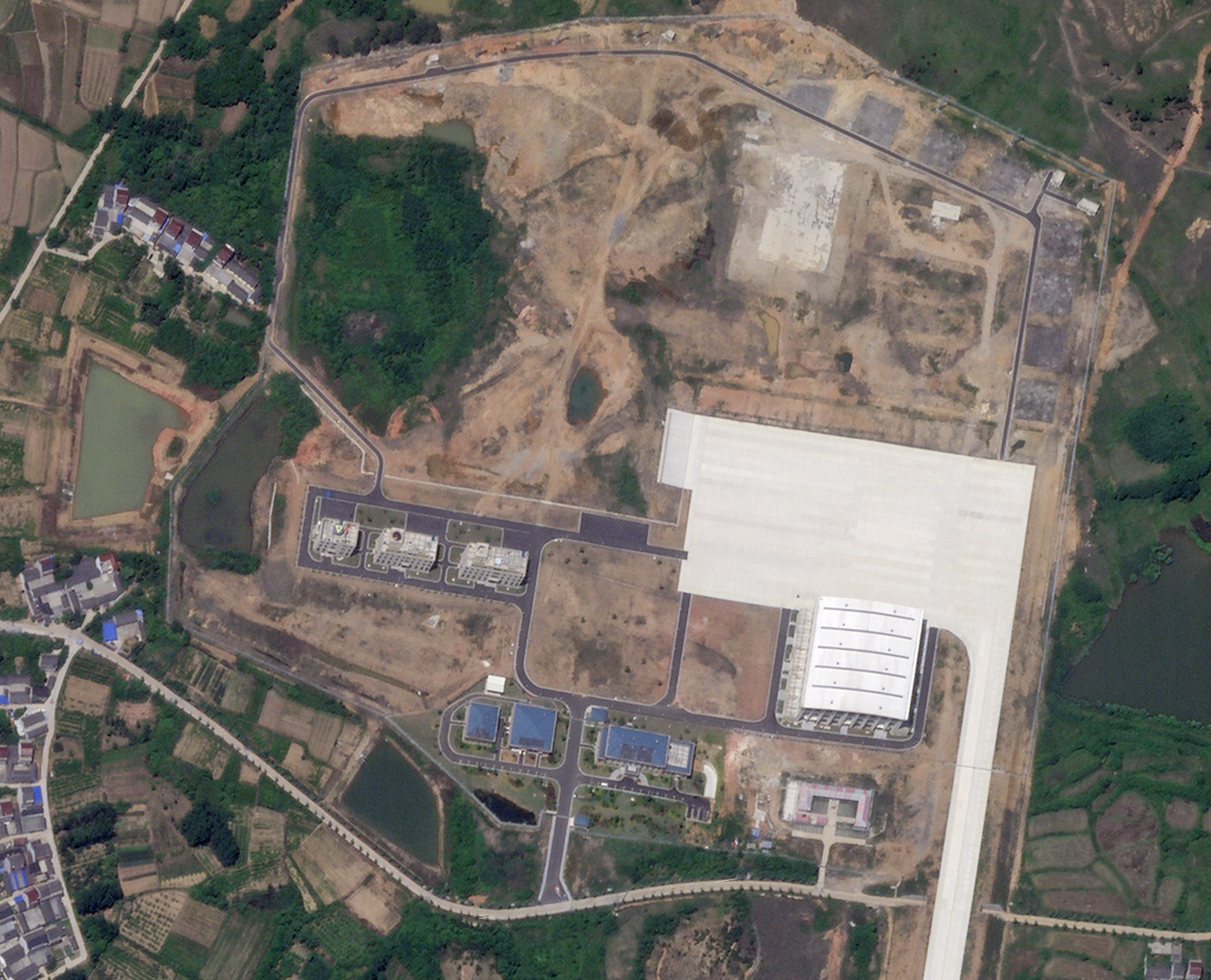
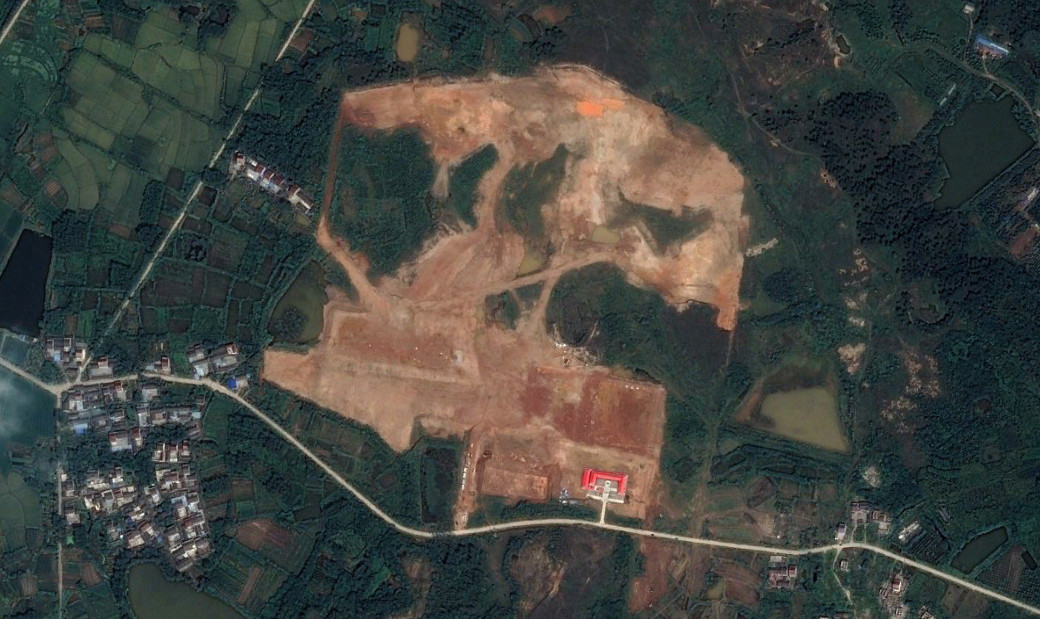
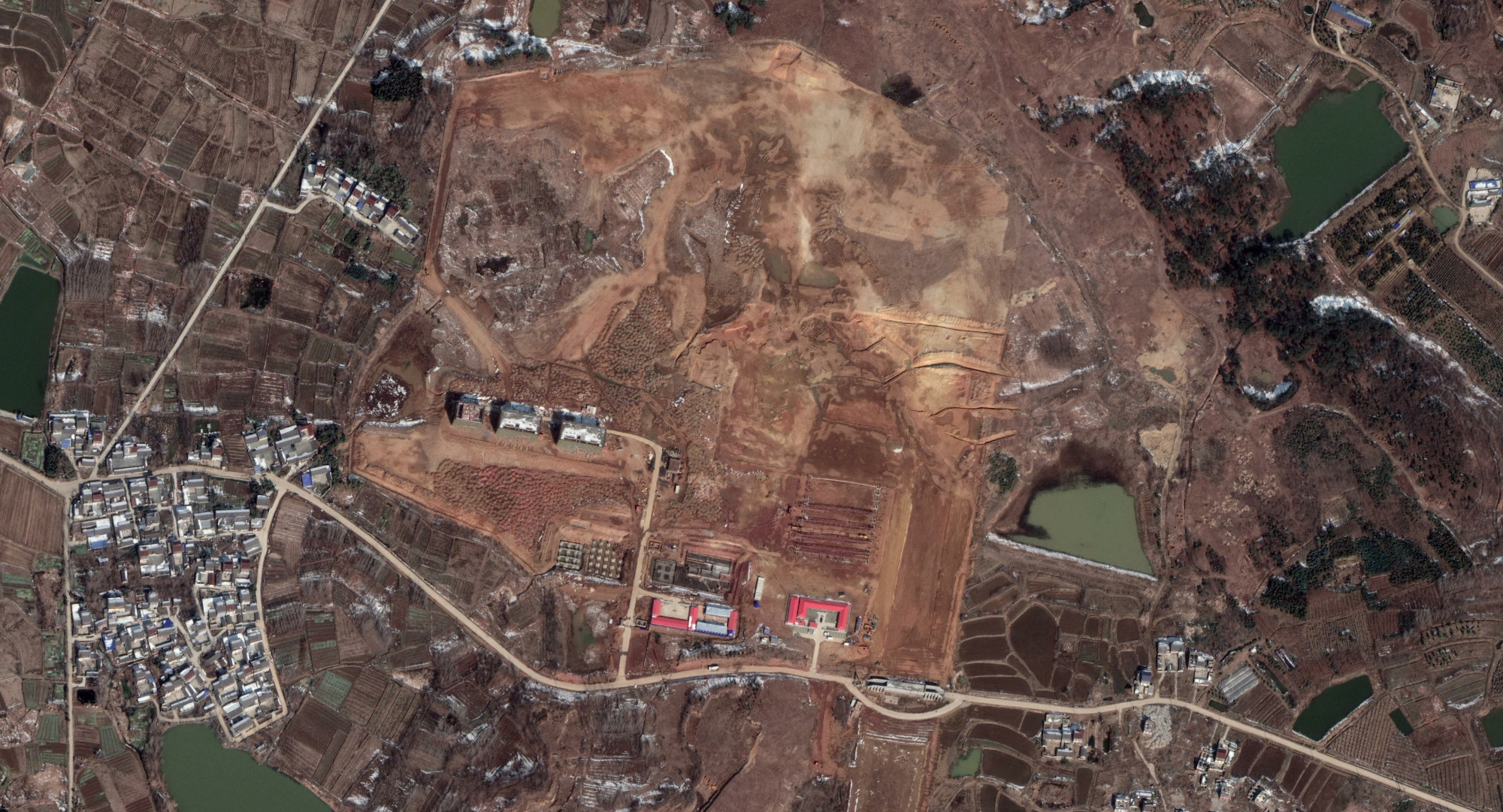
The apron has around 315,000 square feet of open space. In addition, at the top left corner, there is what looks to be an engine run-up area that is 172 feet wide. There are outlines of what could be spots for additional planned hangars adjacent to the apron, as well.
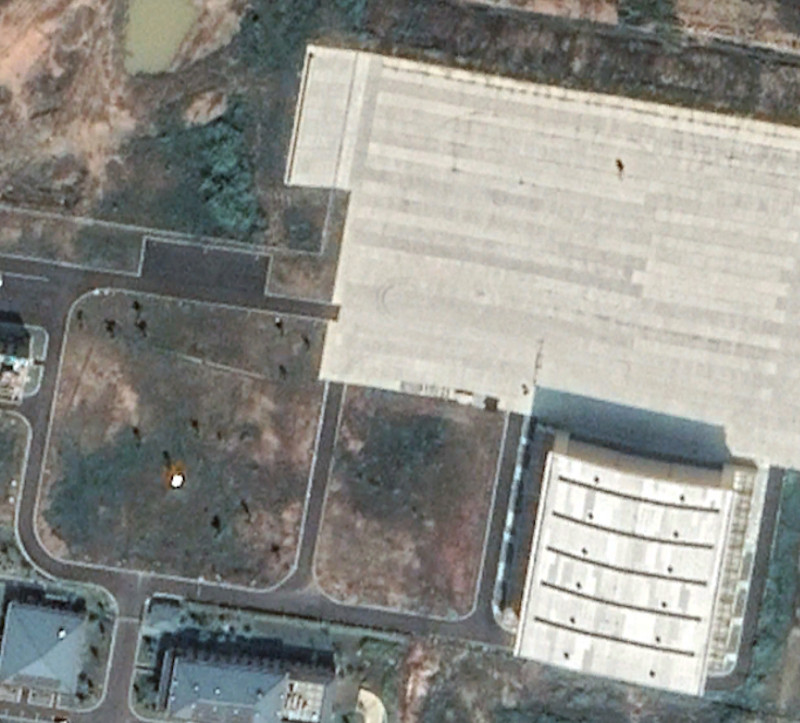
There are also a number of other buildings, which could be administrative offices or dormitories, or more likely a mix of both, within the perimeter of this separated site. In addition, the perimeter itself appears to be fortified, with two layers of fencing all around, guard towers and lights along the northern edge, and gates on the taxiway just short of the apron and at the other end that leads to Luhe-Ma’an’s main runway. The taxiway itself, which at one point passes over a road, is approximately 3,500 feet long and 80 feet wide.
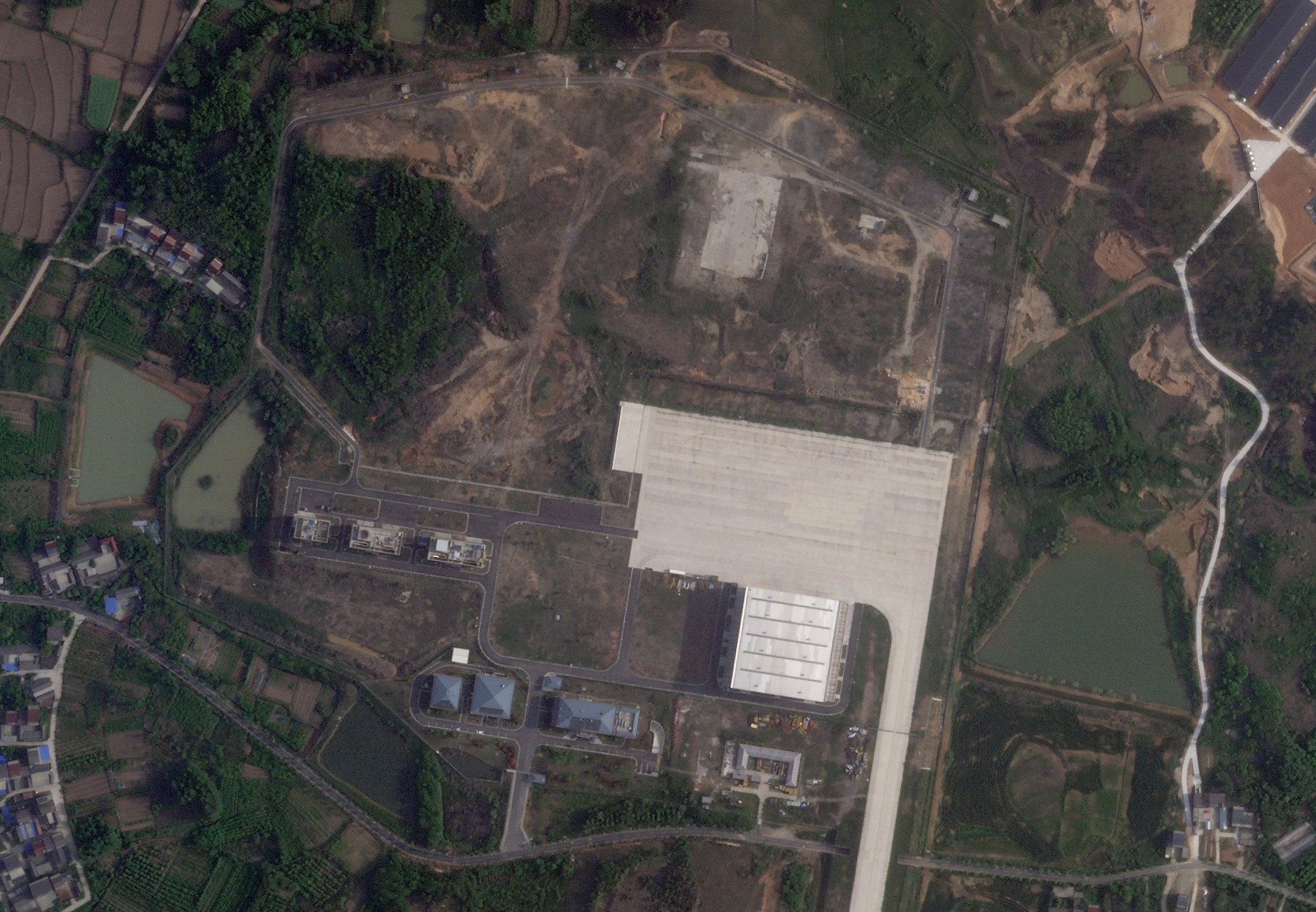
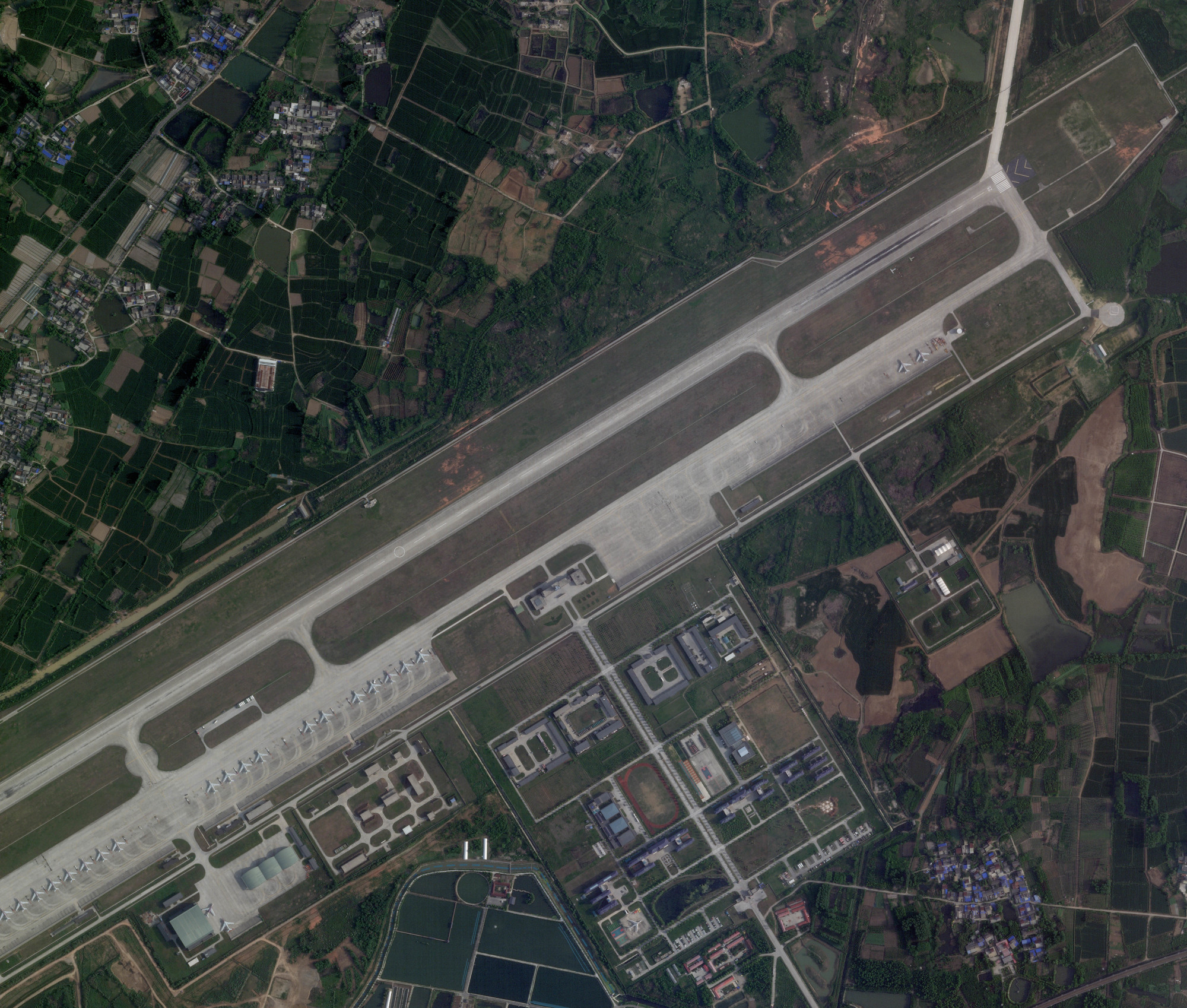
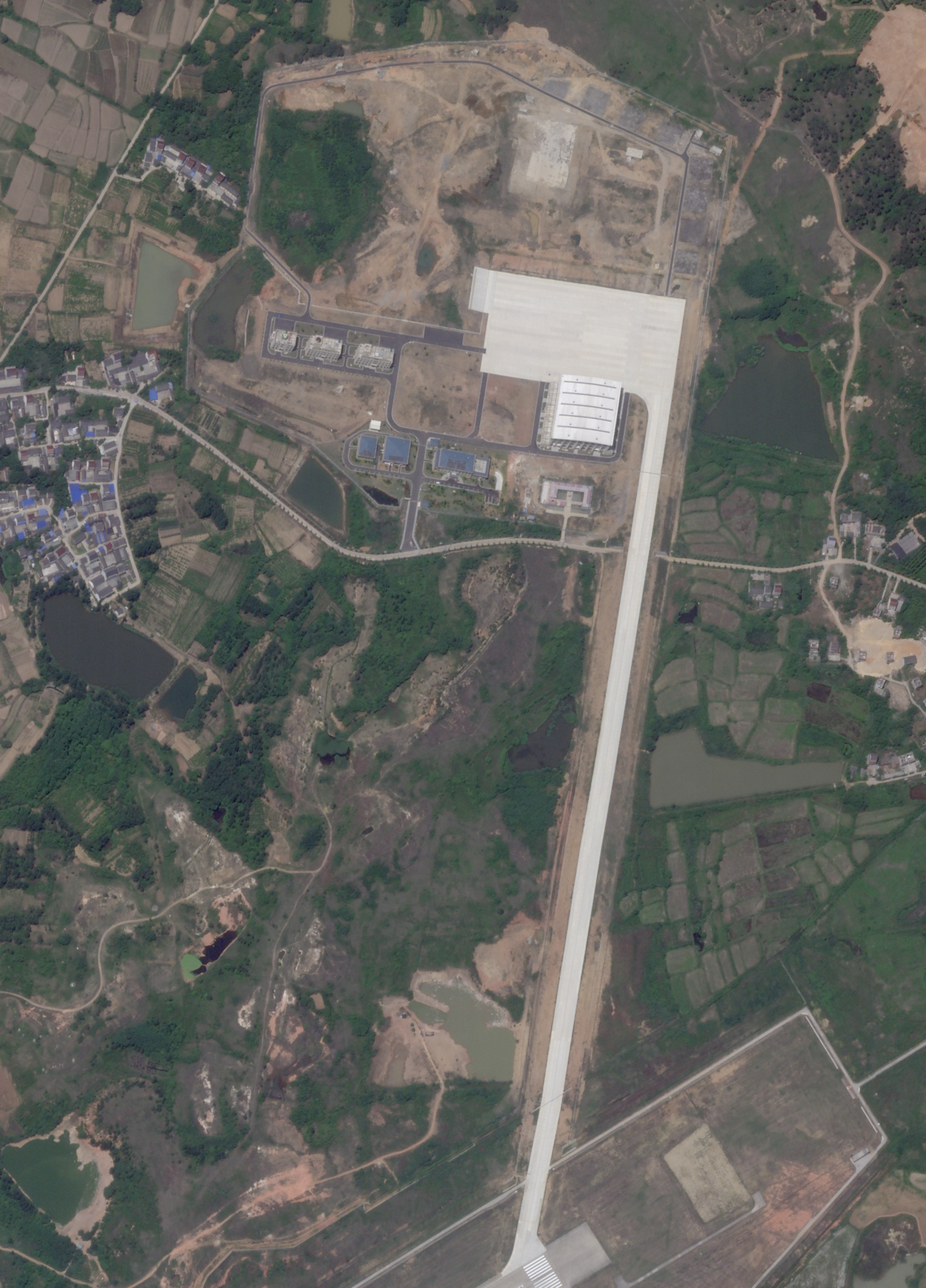
Satellite imagery also shows that, in 2020, construction began at another large site just to the northeast of where the large hangar and its apron are situated. However, it is not clear if these facilities are at all associated with Luhe-Ma’an. There do not appear to be any direct connections between this other site and any part of the base. The extension to the air base had been built on what previously appeared to be farmland and much of the surrounding area still looks to be filled with agricultural enterprises.
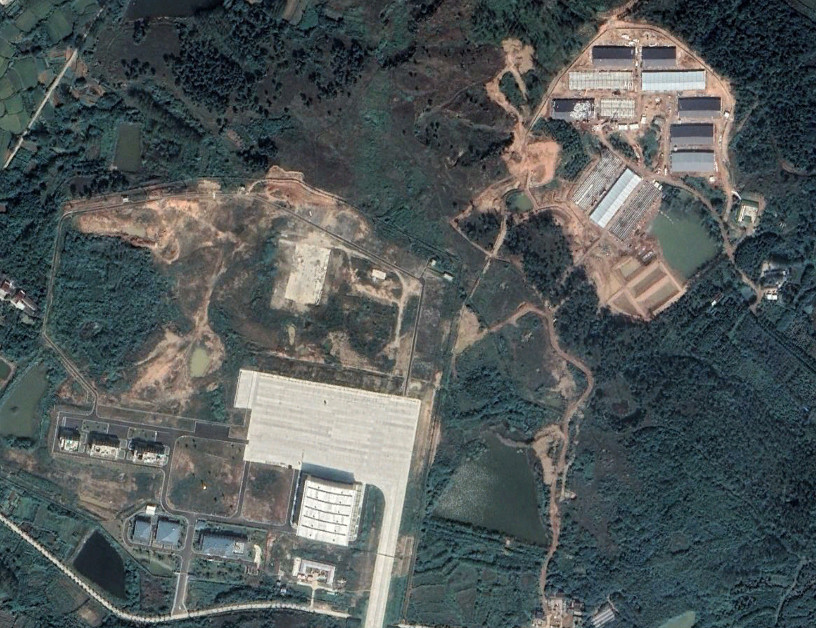

The exact purpose of this detached addition to Luhe-Ma’an is unclear and none of the satellite imagery that The War Zone reviewed appeared to show aircraft of any kind on the apron in front of the hangar. The adjacent base, as a whole, is relatively new, with the construction of the main portion only beginning in 2012 and being completed sometime between 2015 and 2016.
Today, it is reportedly home to the 29th and 30th Air Regiments of the People’s Liberation Army Air Force (PLAAF), both assigned to the 10th Bomber Division, part of the People’s Liberation Army’s (PLA) Eastern Theater Command. The primary aircraft based at Luhe-Ma’an are variants of the H-6 bomber, itself derived from the Soviet Tu-16 Badger, including the H-6H, H-6J, and H-6M missile carrier versions.
There are somewhat similar extensions at some other PLAAF bomber bases, notably at Anqing in Anhui Province, some 160 miles southwest of Luhe-Ma’an, which hosts additional elements of the 10th Bomber Division. Some of these also include larger hangars, but none of them have the same level of associated infrastructure and security measures, or as are secluded and highly developed, as the one seen at Luhe-Ma’an.
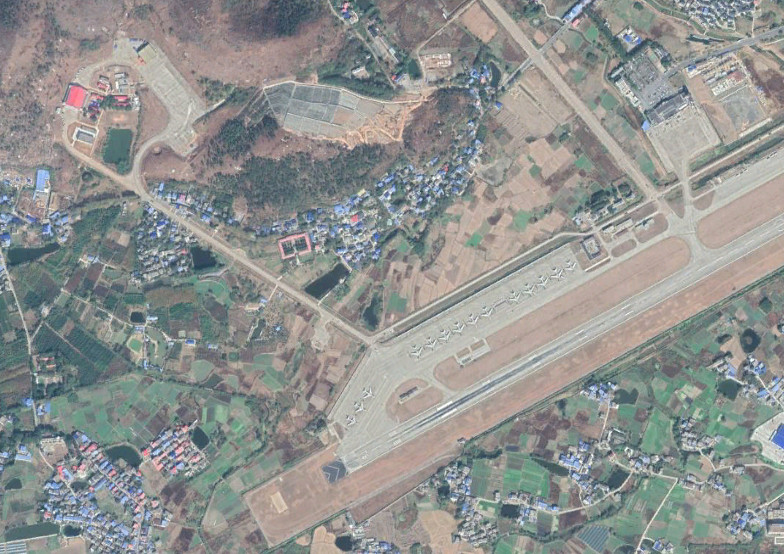
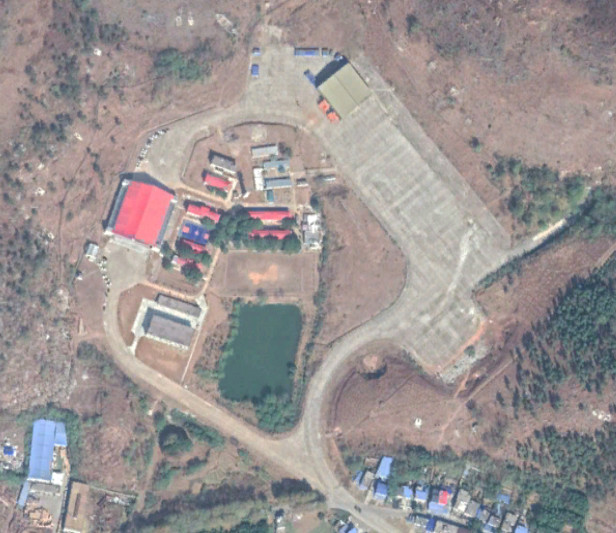
All told, it seems hard to believe that the facilities at Luhe-Ma’an are simply an expansion of the base’s infrastructure given the distance from the main portion, the additional security perimeter, and the unique set of self-contained facilities there. Typically, these kinds of features point to areas of military bases where uniquely sensitive activities occur.
It is certainly interesting to note that pictures of WZ-8 drones with serial indicating that they were assigned to the 30th Air Regiment emerged in September 2019, just months after the connecting taxiway was ostensibly completed. This was also when this unmanned aircraft had first emerged publicly, during preparations for a massive military parade marking the 70th anniversary of the founding of the People’s Republic of China. There were also rumors at the time that these drones had been in service since as early as June 2018, shortly before the large hangar at Luhe-Ma’an was finished.
Various features of the WZ-8, especially a pair of large suspension lugs on top of the fuselage, strongly indicated that it was designed to be launched in mid-air from specialized H-6N aircraft. You can read more about the WZ-8 and the H-6N, the latter of which is also capable of carrying out outsized payloads, including large missiles, here and here, respectively. There have also been reports that a number of older H-6M aircraft may now also be configured to launch these drones. Some sources refer to these modified jets as H-6MWs.
While no longer secret, both the WZ-8 and the H-6N still appear to be sensitive platforms within the PLAAF, which could demand more specialized facilities, such as the ones at Luhe-Ma’an. The rocket-powered drones have only been seen at a remote test base in the Gobi Desert, so this could indicate that the PLAAF is working to establish more of a true operational capability with these unmanned aircraft, or at least move them further out of the developmental phase, if it hasn’t already.
From Luhe-Ma’an, which is less than 200 miles west of China’s Yellow and East China Sea coastlines, as well as around 600 miles north of Taiwan, H-6Ns, as well as H-6Ms, carrying WZ-8s would have ready access to multiple areas of strategic significance in the western Pacific region. Just in April, a dozen H-6s assigned to the 10th Bomber Division, including at least one H-6MW, took part in an exercise off China’s eastern coast.
There is also the matter of the H-20 stealth bomber, which has reportedly been in development, at least on some level, since the early 2000s. To date, there has only been one official rendering of any kind of this aircraft, which has long been reported to be a flying wing-type design very roughly analogous to the U.S. Air Force’s B-2. The parking/runup area on the apron at the facility in question is roughly the same dimensions as the B-2.
There have been persistent rumors in recent years that the H-20 may be about to emerge publicly, none of which have so far proven to be true. In October 2018, however, an official picture from a morale-boosting gala hosted by an unspecified Eastern Theater Command bomber unit did show a logo featuring the silhouette of what appeared to be a tailless, flying wing-type aircraft.
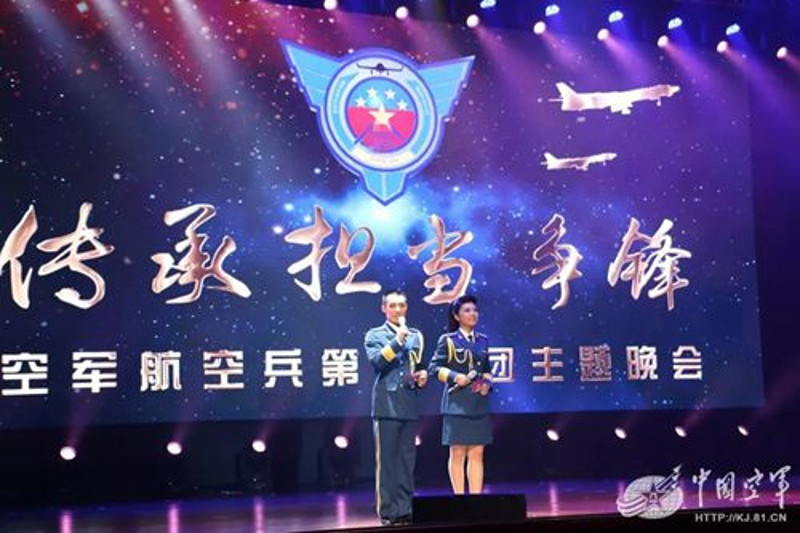
At that time, Andreas Rupprecht, a Chinese military aerospace expert and friend of The War Zone who tweets as @RupprechtDeino, dismissed speculation that the H-20 was about to make its public debut in the comments on this very website. At that same time, he also wrote that “I stick to my analysis I made for Jamestown, this [the official reveal of the H-20] could be within 2-3 years.”
The H-20 is certainly the kind of asset that would require facilities with additional security, but that would also benefit from being able to fly, even just for test and evaluation purposes, from an established bomber base. A large hangar would be particularly useful to shield these aircraft from both prying eyes and the elements. The materials and coatings typically used in the skin on stealthy aircraft are notoriously sensitive to weather and other environmental factors.
Even if the H-20 is still months or even years from starting a more public test and evaluation phase, or even entering service, it would make sense to have specialized facilities already established to support those aircraft when they do arrive. We have seen similar infrastructure developments at Edwards Air Force Base in California ahead of the arrival there of the B-21 Raider stealth bomber, which is presently expected to make its public debut next year.
Another possibility might be that this satellite extension at Luhe-Ma’an is related, in some way, to the restoration of the PLAAF’s strategic nuclear mission, which formally occurred in 2017, according to the U.S. Defense Intelligence Agency (DIA). “In October 2019, China signaled the return of the airborne leg of its nuclear triad after the PLAAF publicly revealed the H-6N as its first nuclear-capable air-to-air refuelable bomber,” an annual Pentagon report on Chinese military developments sent to Congress in 2020 added. At the same time, at least in its present configuration, this satellite extension appears to lack the kind of specialized weapon storage facilities typically associated with bases that host nuclear weapons.
Of course, these are just a few possibilities as to what the PLAAF might be using this hangar and its adjacent facilities for. Its purpose could be completely unrelated to either the WZ-8, the H-20, or nuclear weapons.
Regardless, the large hangar at Luhe-Ma’an, and the other associated infrastructure hidden away within its security perimeter, underscore the presence of some significant and sensitive activity going on at the base. With core elements of this detached extension to the base now looking largely finished, new hints about exactly how the PLAAF may begin to emerge.
Contact the author: joe@thedrive.com
